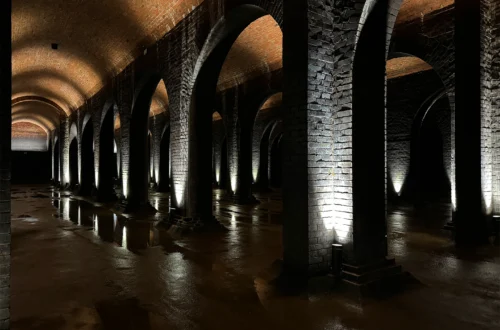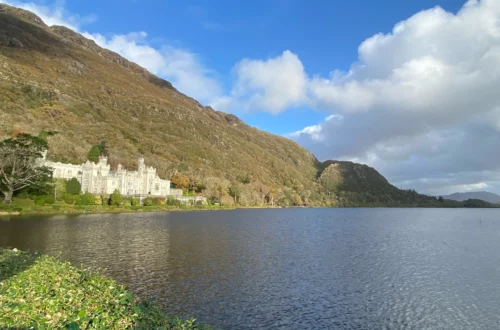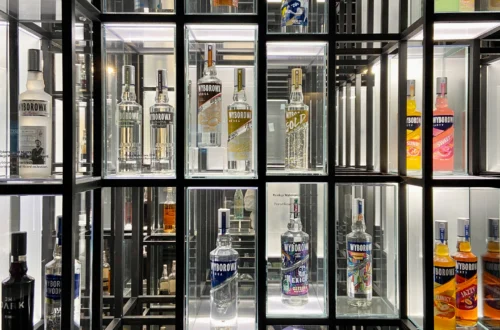
Two days in Kotor – City of Cats
During my week in Montenegro I spent two days in Kotor – the city of cats and the Natural and Culturo-Historical Region of Kotor – a UNESCO World Heritage site. Here’s my recap of those two days, what to see, what to do and where to eat in Kotor and along Boka Bay.
This post contains affiliate links to things like tours and hotels. These help me earn a small commission at no additional charge to you. Every affiliate link is marked with a *.
Overview of two days in Kotor
- Kotor – City of Cats
- Where to stay in Kotor
- Perast
- What to do for two days in Kotor
- Where to eat in Kotor
- Map of two days in Kotor
Kotor – City of Cats
Why is Kotor called the city of cats?
Kotor is full of streetcats and has somewhat adopted the streetcat as their mascot. As a port city many ships landed in Kotor over the centuries, many of them with “feline sailors” on board, which were responsible to keep vermin away from food and cargo. Once docked the cats left the ships and several stayed in the city, rather than returning to life on the sea.
Stray cats can be found in large numbers in the coastal regions of Montenegro.
More on that in this post:
Where to stay in Kotor
I didn’t stay directly in Kotor, but rather in Perast, a tiny settlement 14km away. A direct bus line runs between the two towns once an hour and costs 1,5€ per way. Perast is beautiful in the morning and in the evening, basically before day trips start arriving and after they have left again.
In Perast I stayed at the Hotel Leon Coronato*. The hotel itself is a heritage building, the original walls date back to 1623 and the recent renovation happened in 2019. The staff there is exceptional, every hotel should wish to have employees like them.



What to do for two days in Kotor
Kotor is the most famous town located on Boka Bay (also called Kotor Bay). It has an old town, including the old city walls, churches and a fortress you can hike to, museums, a sea promenade and several cafes and restaurants to take a break in. It’s close to several natural sights and surrounded by some villages that are also worth a visit.
Explore Kotor Old Town
The “Natural and Culturo-Historical Region of Kotor” was declared a UNESCO World Heritage site in October 1979, after an earthquake had devastated 70% of the monuments in the the town and surrounding areas in April 1979. Over the years much has been restored and the old town of Kotor gives you an idea of how it might have looked at the height of it’s importance.
Several blogs I’ve read have called this old town charming and photogenic, but I have to say I much preferred the one of Budva. Less crowded, less dirty, more peaceful. I didn’t take many pictures of the old town itself since there were just too many people.
You can also walk along the old city walls of Kotor (not to be confused with the hike up to the old Fortress of Kotor) and enjoy the look over the marina and the old town from there.
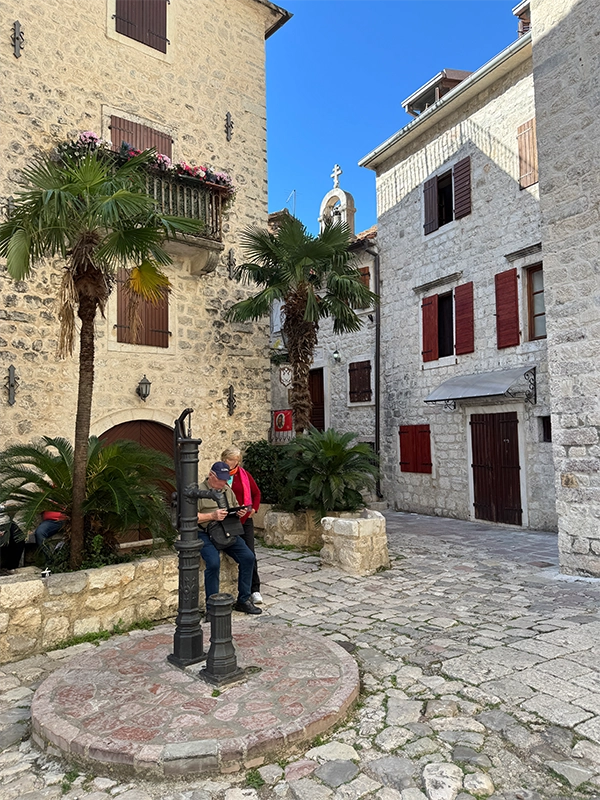




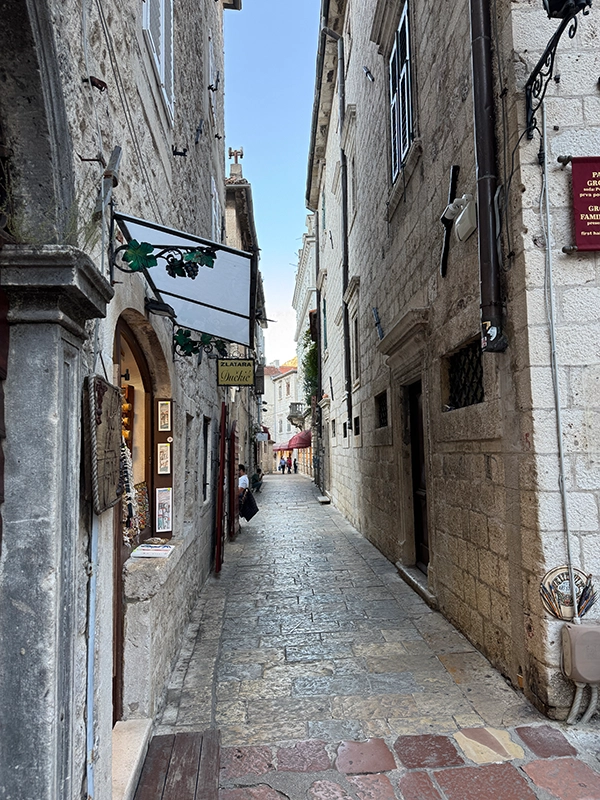
Maritime Museum
The collection of the Maritime Museum of Montenegro in Kotor is based on the collection of the “Boka Marine” (Bay of Kotor Navy) fraternity and first opened it’s doors to the public in 1900. After the earthquake of 1979 the museum remained closed until 1984 when the newly renovated building presented the countries marine and naval history with newly curated expositions.
The museum spreads out over three floors and consists of furniture from an old captains house (5) – including stunning intricate parquet flooring (6), portraits of famous captains and paintings of their ships, models of old galleys and sail boats (4), navigational instruments, medals from various governments throughout Montenegrin history, handed out within the navy, but also for extraordinary deeds in civilian marine life (2), as well as numerous souvenirs merchants and soldiers brought from all over the world (3).
It was one of the more expensive museums to visit, but you can easily spend 2 – 3 hours in here.
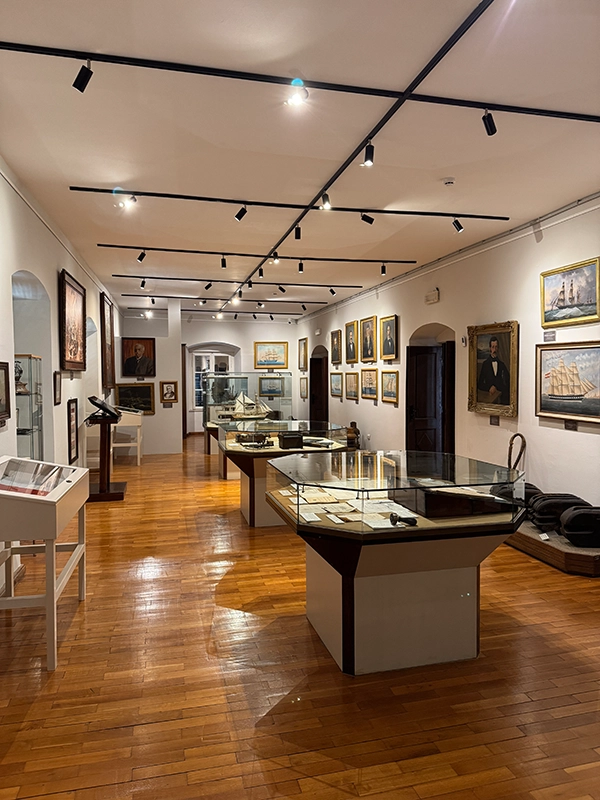
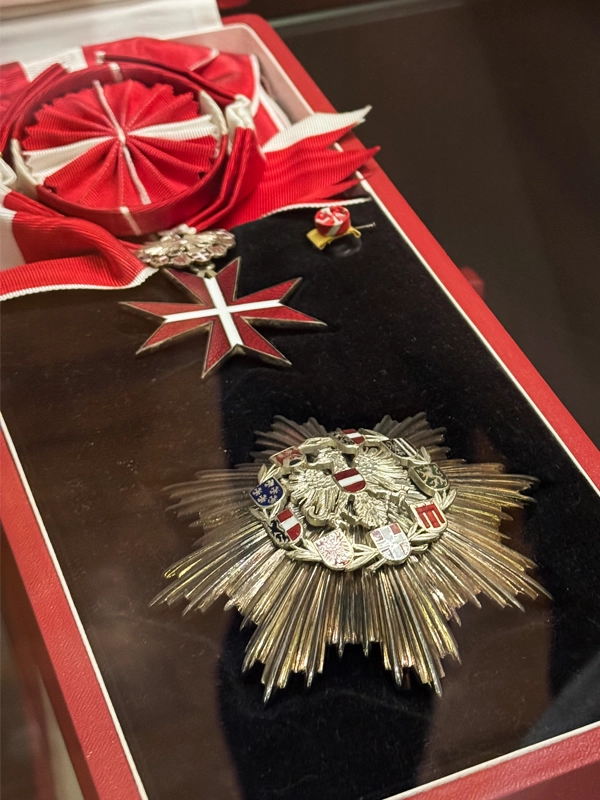


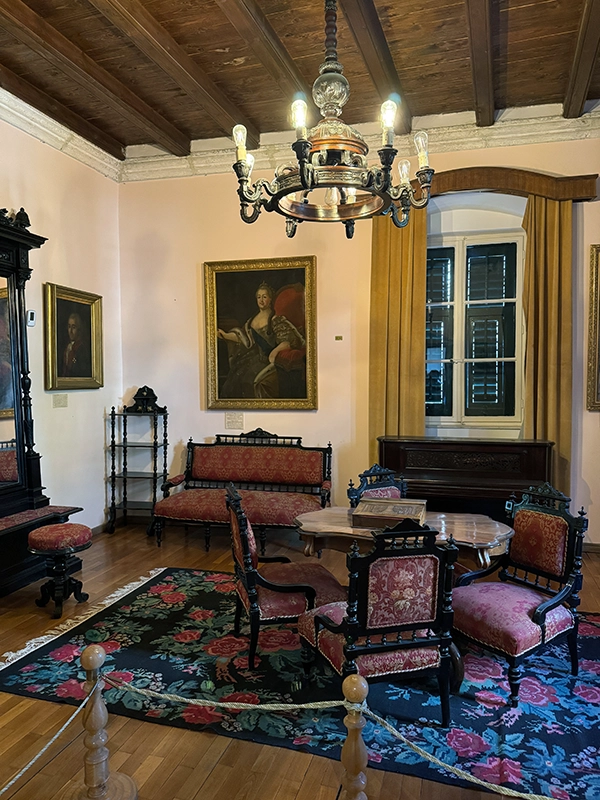
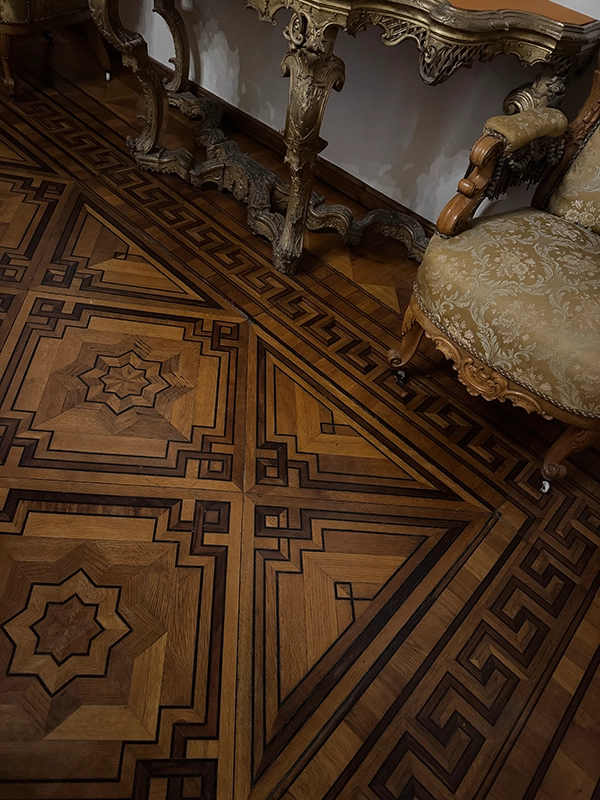
Cat Spotting
Since Kotor is the city of cats you can spend your time there cat-spotting, you don’t even have to try hard! The street cats are everywhere in Kotor: On top of walls, inside shops, on chairs and running between the feet of people, especially when those people hold something edible. Some are resting in potted plants or on doorsteps, others visit the beach and even approach strangers.
If a cat approaching you has a nipped ear you know it has been spayed or neutered and most likely received flea and worm treatments. Most cats are friendly if you don’t get all up in their space and you can even pet them, but you have to be aware that some might have unwelcome passengers (like fleas).
You can see all of my cat pictures in this post: Street Cats of Montenegro
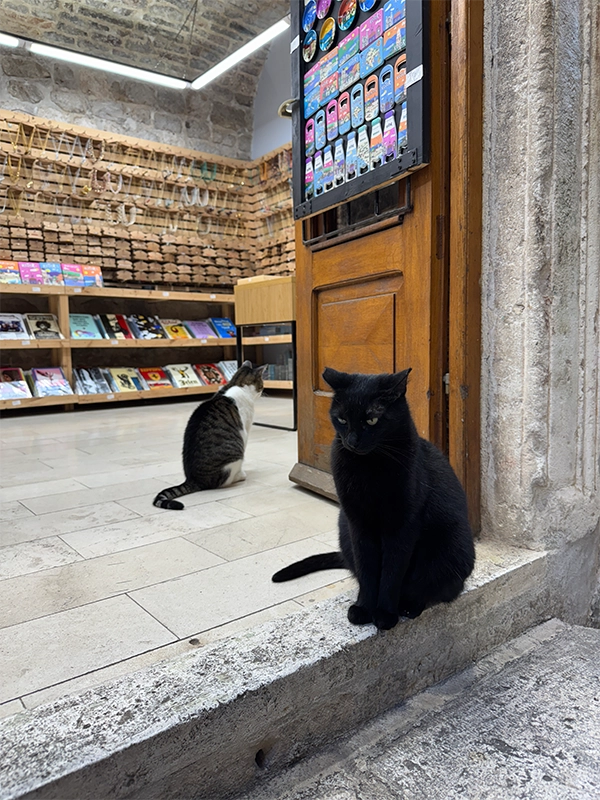
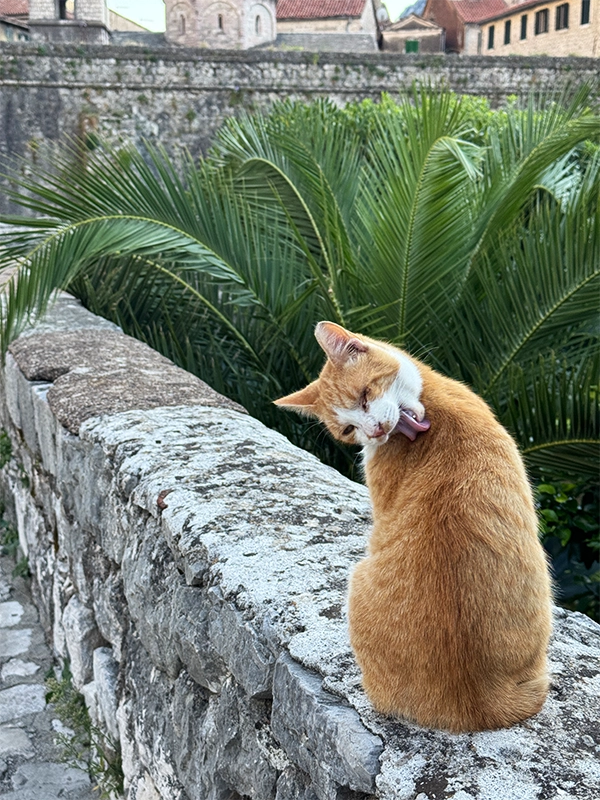
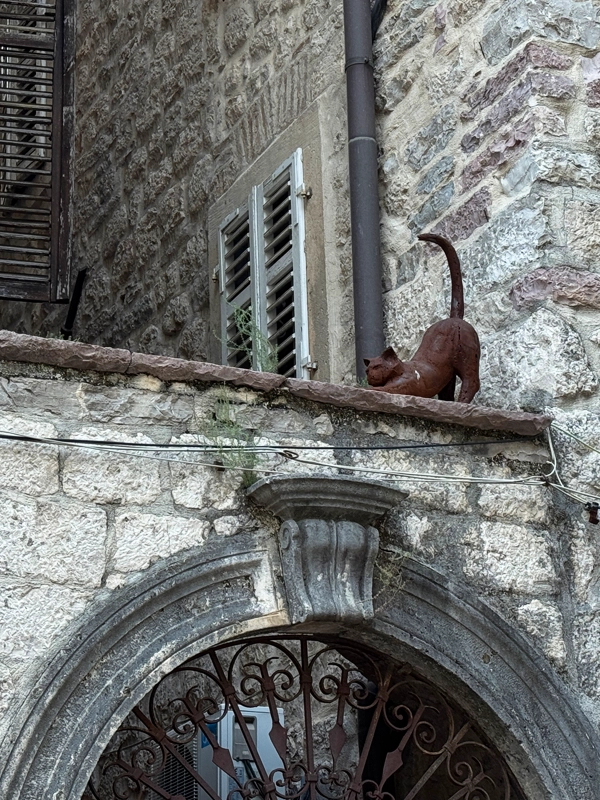
Cat Museum
Not only is Kotor full of roaming cats, it also has a cat museum! The museum isn’t big, you’ll need 90 minutes at most to see all of it, but an admission ticket also only costs 1€.
The museums collections consist of everything cat related in art and culture: cat-coins (2), cat-stamps and cat-postcards (3), cat themed posters and games, cat themed medals, as well as photographs and paintings from all over the world and from many different centuries with cats. Everything in the museum shows off very impressively that humans have always been obsessed with cats.
And to top it all of the cat museum is overseen by a cat (1)!
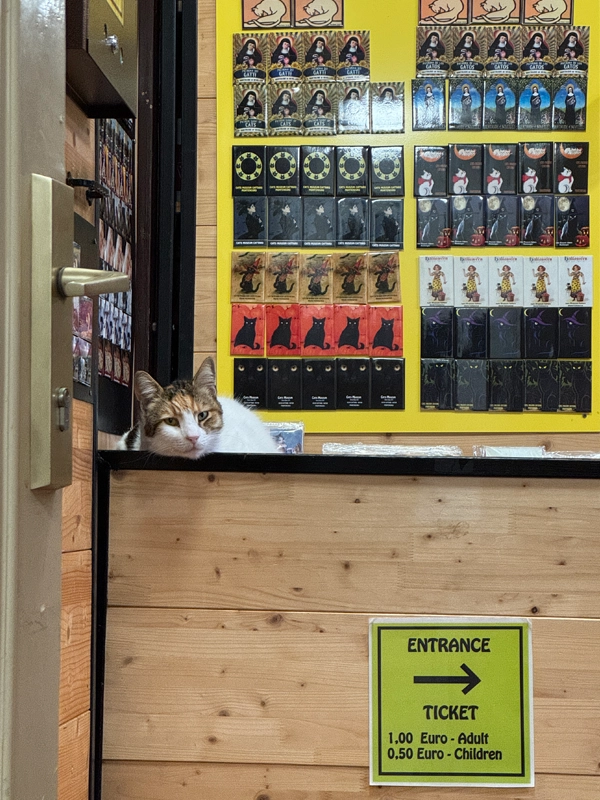

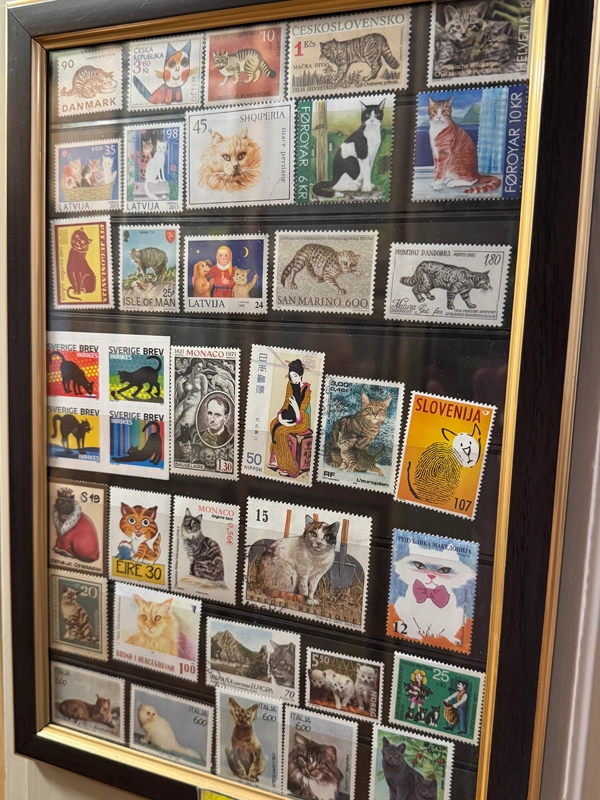
Climb up to the old Kotor Fortress
The official hiking route up to the fortress costs 15€, even in the off season in October when I was there. The walk / hike up the city walls mainly consists of uneven medieval stone stairs and is moderate in difficulty. The hike to the fortress is harder than that, so I would only recommend it if you are in good physical shape.
When you look at the pictures the views do seem to be worth it.
The first two pictures are by Mujo Hasanovic, since I was not able to climb up to the Kotor Fortress myself.



Kotor Cable Car
The Kotor–Lovćen Cable Car reaches from a ground position near the city up onto a mountain inside Lovćen national park. The top station offers a breathtaking view over the national park, as well as Boka Bay. Located next to the station is Montenegros only Alpine Coaster with a track length of over 1km.
Our Lady of the Rocks & Blue Cave Boat Tour
One of the most popular things to do at Boka Bay is taking a boat tour to the artificial Our Lady of the Rocks island, as well as the former submarine tunnel and the Blue Cave.
The tour above is the tour I went on. The boat was already full of other guests from Kotor when I got on in Perast. Our first stop was the man made island “Our Lady of the Rocks”. Legend has it a fisherman found a figure of mother Mary and her baby Jesus on a natural rock in this spot in 1452. Afterwards sailors started throwing rocks into the water every time they returned home. Ships were also sunk at this point to enlarge the island. Today there’s a small catholic church on the island, as well as an even smaller museum.
During peak hours (9 am to 5 pm) many boats stop at the island and even during shoulder season there were too many people on the island. Our captain had asked if we wanted to stop now or later and sadly everyone else voted for now, so we shared the tiny island with at least 100 – 150 other people.
Next stop after the island was an abandoned submarine tunnel. Here we were more lucky. Five boats just came out as we approached and the next ones didn’t arrive until we had a chance to explore the inside by ourselves. Three submarine tunnels are located close to each other in the mountains surrounding Boka Bay. These tunnels were built by the Yugoslav Army in the middle of the 20th century and served as cover from attacks during WW2 as well as the Balkan War (reports vary on this, some sources say they were only built as late as 1970).


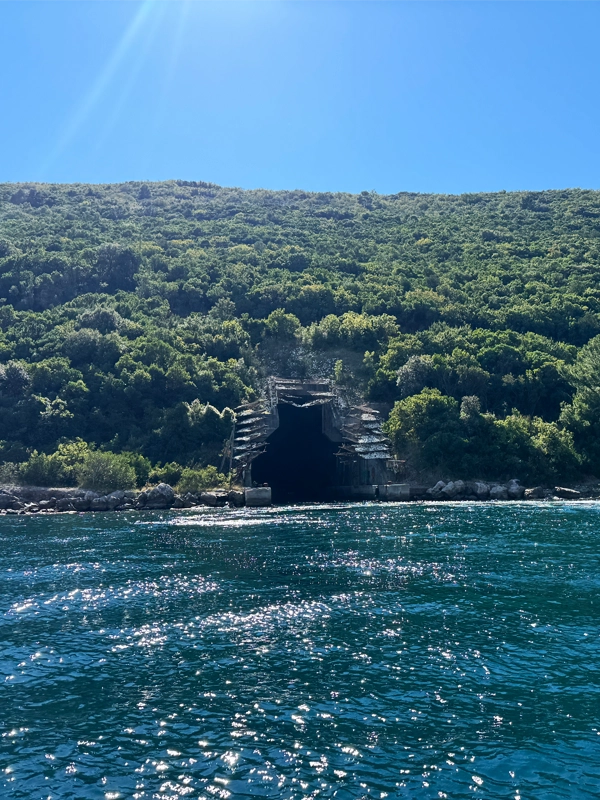
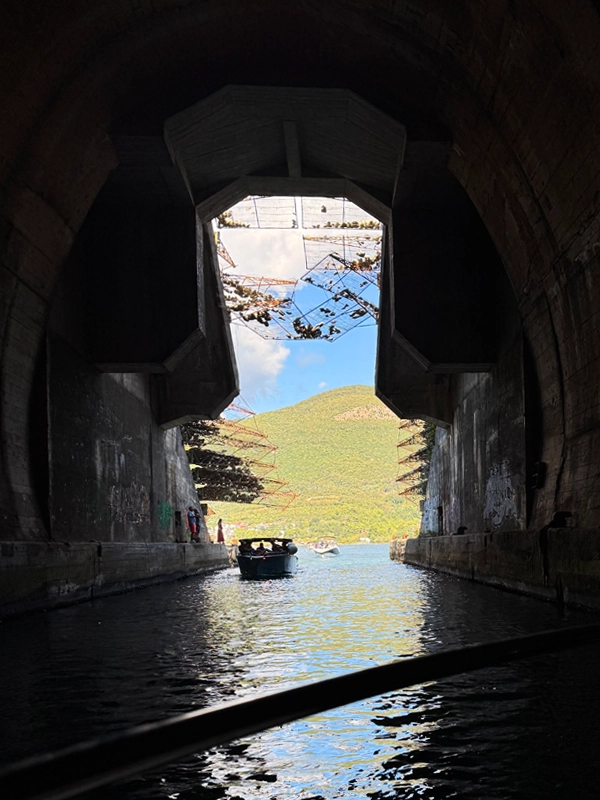

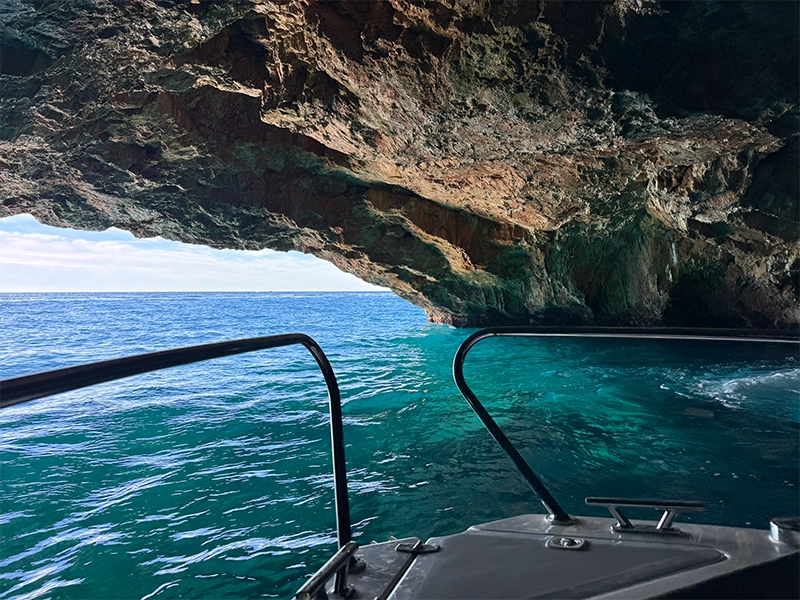

On our way out of the bay we cruised past Mamula island (2nd picture above), a former prison for political prisoners. Today it’s a luxury hotel. From this location you can also see the tip of Croatia.
The last stop was the Blue Cave, a cave in which the water is a clear, cerulean blue. The cave was absolutely packed with boats and speedboats, so we left after not even five minutes and our skipper stopped the boat in a mini bay close to the cave. Here we had the chance to swim. Only three of us (5th picture above) dared to jump into the water, coincidentally all Germans. The water was cold, but not unbearable, even in October and in the open ocean.
Where to eat in Kotor
Many places in and around Kotor are catering specifically to tourists, meaning the food is okay but nothing more and the prices are inflated. It took me a while to navigate the reviews to find places I was genuinely excited to go to.
Eho Restaurant
The best meal I had in Montenegro was at Eho. In fact the food there was so good I wrote an entire separate article about it: Eho Restaurant Perast – Local specialties meet culinary inspiration
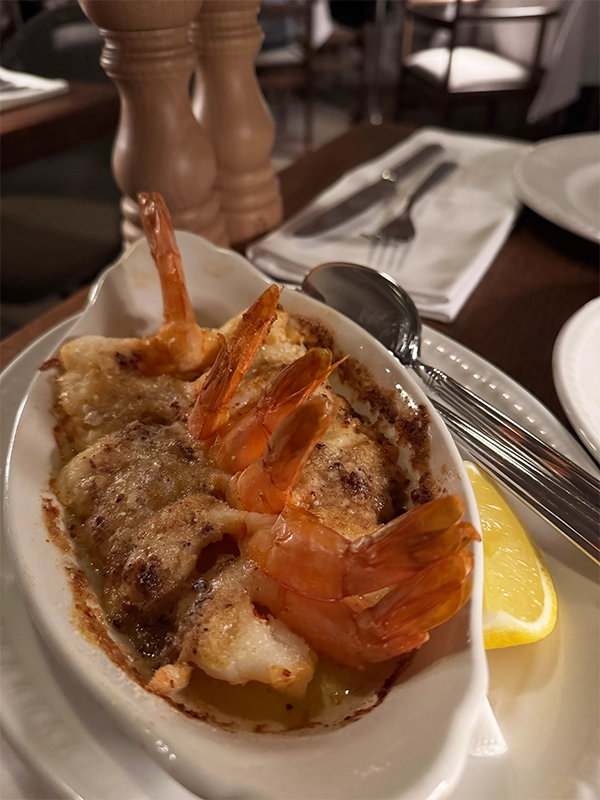
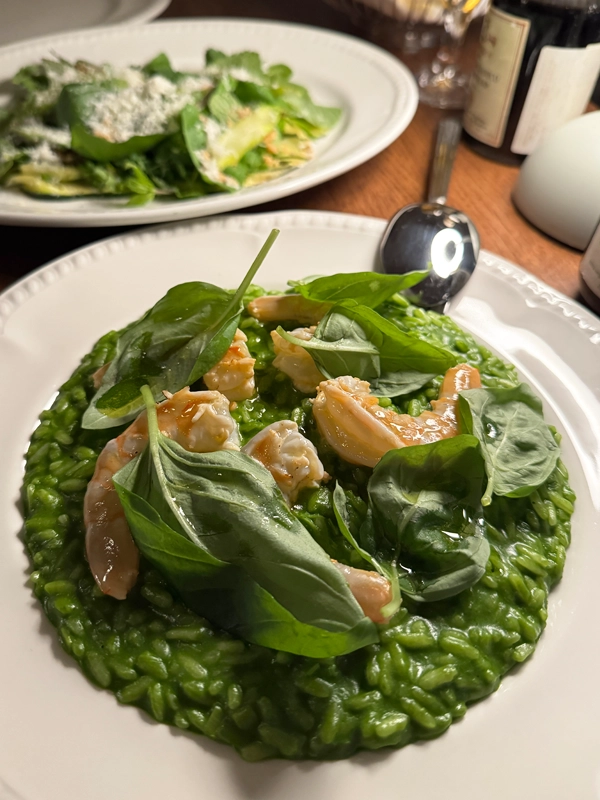
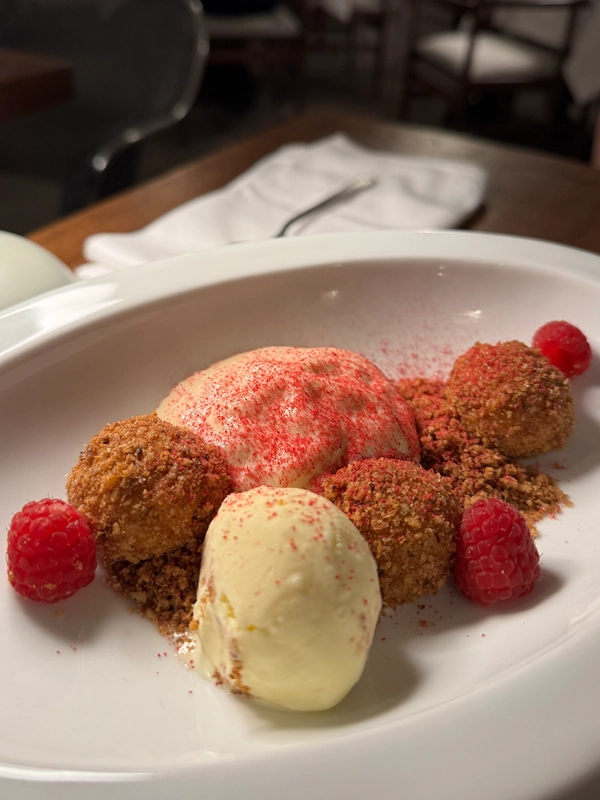
BBQ Tanjga
The second best meal in Montenegro was at BBQ Tanjga. They have different meat-based dishes, from Cevapi to dry aged Entrecôte. The meat measured by weight and comes with fries, sauces and a selection of salads and sides. I went with the Entrecôte and it was delicious. If you walk in and there are no free tables, try the outdoor seating out-back.
Mon Bistro Cafétéria
The only decent Latté I had anywhere in Kotor / Perast was at Mon Bistro Cafétéria. I went with a chocolate doughnut to go along with it and that was decent, too.
Moritz Eis
With 3,50 € for 80 grams of ice cream this chain is overpriced. Probably due to them being in tourism-hotspots all along the coast. If you can bring yourself to pay that the ice cream itself is good and they have some interesting flavours – I had lemon & mint.
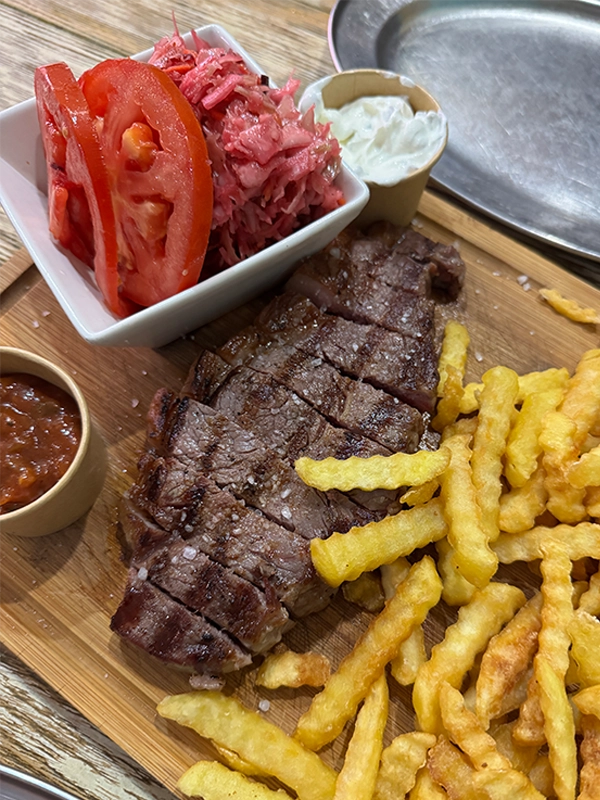
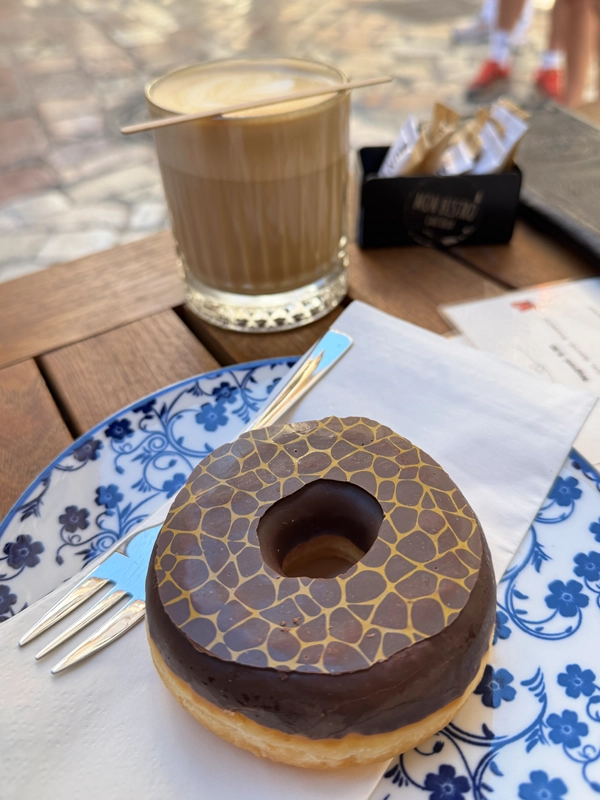

Moments Restaurant
Medovik is a honey cake with many layers that originated in the Soviet Union. Today it is still popular in many eastern European countries. You can try this Honey Cake at the Moments Restaurant in the town Dobrota, which is de-facto a part of the city Kotor (geographically, not governmentally). On your way from the old town to the restaurant you can walk 1,5 km along the coastal promenade.
The cake is not too sweet, the cream filling gives it a nice balance and the fresh berries it was served with made for a delightful sour note.
They also serve a classic Lemon Tart, though it true former Yugoslavian fashion it was covered in a much thicker layer of semi-stiff meringue than necessary (see: Šampita). But the lemon filling and the crunchy pie layer were delicious.
Calletta
This tiny bistro is in a small alley parallel to the main street of Perast. They sell different kinds of Focaccia Sandwiches and some cocktails. I took my fresh mortadella sandwich to go and enjoyed it on a bench near the water.

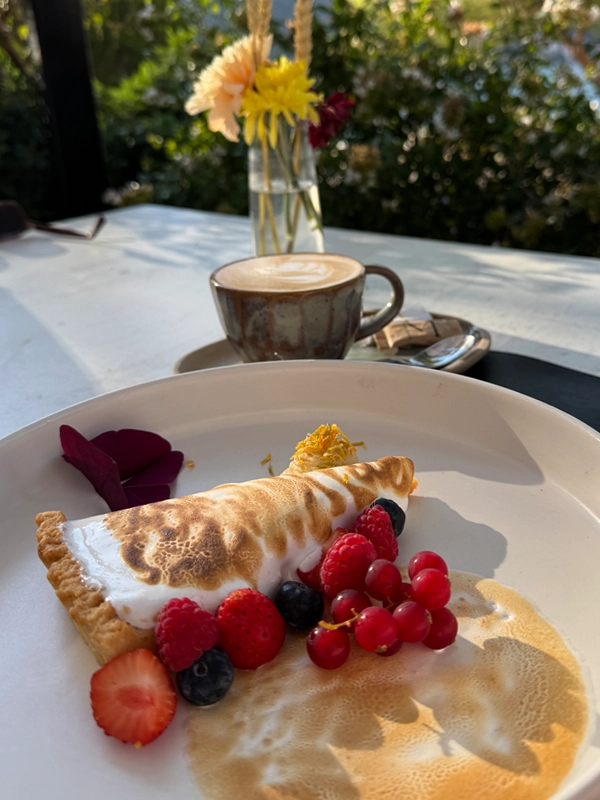
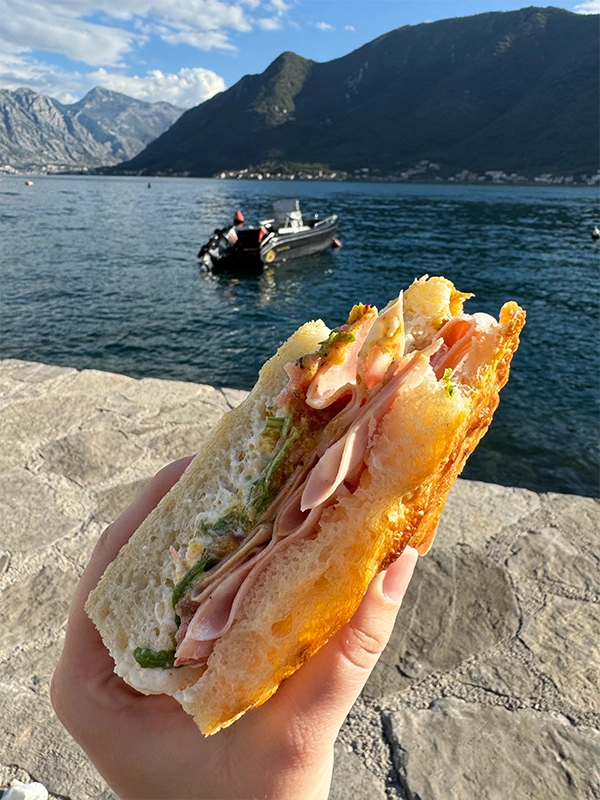
Everything I earn through affiliate Links in ALL the posts in the category Montenegro will go to the charity “Kotor Kitties” that takes care of street cats in Montenegro. That means YOU can also give to the charity, without spending an extra cent! Just book a tour through my blog you’d book anyway and a portion of the price goes to help the cats!


